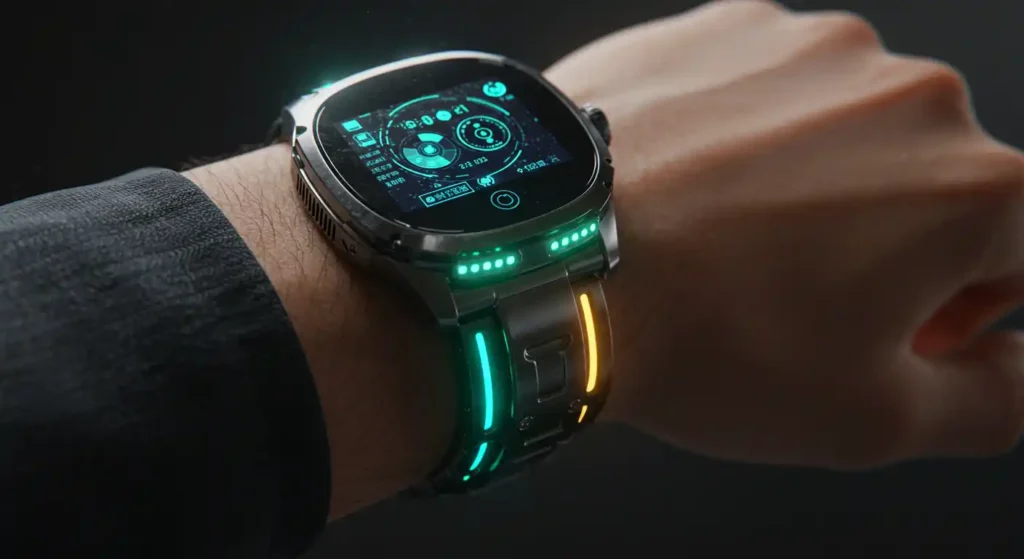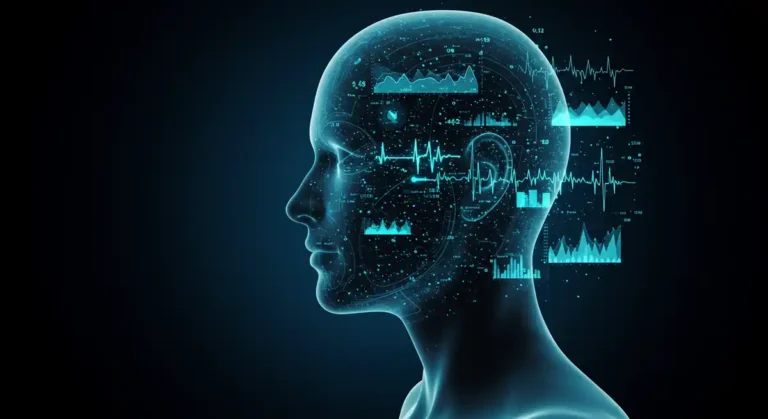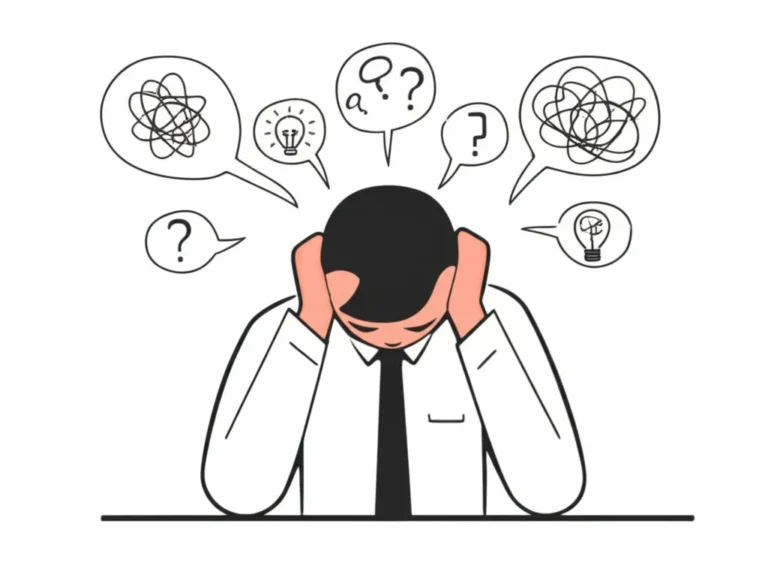Best Wearable Tech for Biohackers in 2025: Which Is Right for You?

Ever stared at your fitness tracker wondering if those numbers actually mean anything useful? Or maybe you’ve felt that twinge of overwhelm scrolling through endless wearable options online?
You’re not alone – and that confusion stops today.
I remember the frustration when I bought my first biohacking wearable.
The data was interesting, but I had no idea how to use it to actually improve my life. Six devices and countless experiments later, I’ve learned what truly matters.
In this article, we’ll cut through the noise.
Because in the world of biohacking, it’s not just about collecting fancy stats – it’s about transforming those numbers into decisions that actually upgrade your daily life.
Whether you’re a seasoned self-quantifier or just curious about tracking your first metric, I’ll share:
- What’s genuinely worth tracking (and what’s just marketing fluff)
- Which wearable health devices actually deliver on their promises for specific goals
- How to use wearable technology in healthcare like a true biohacker, not just a passive data collector
- And how to start seeing real results today – even as a complete beginner
Let’s discover the best wearable tech and how to match the right with your unique goals, so you can start seeing meaningful improvements, not just pretty charts and graphs.
Why Wearable Technology Matter in Your Biohacking Journey

Have you ever made a change to your routine that seemed small but transformed everything? That’s the power of targeted feedback.
The foundation of any high-performing lifestyle is understanding what’s actually happening beneath the surface.
Wearable health devices in biohacking offer a window into the hidden rhythms of your body and mind – HRV fluctuations, sleep architecture, focus windows, stress responses, and metabolic patterns.
Raw data becomes insight. And insight becomes transformation.
I discovered this firsthand when my sleep tracker revealed that late-afternoon coffees were cutting my deep sleep in half – even though I felt fine falling asleep. One simple timing shift later, my morning energy doubled.
The Core Metrics That Actually Matter
Not all data is created equal. After years of testing, here are the biohacker-friendly metrics that actually drive meaningful change:
- Sleep architecture (REM, deep sleep percentages, sleep efficiency)
- Heart rate variability (HRV) – your body’s stress resilience fingerprint
- Resting heart rate (RHR) and respiratory patterns
- Cognitive performance and attention patterns
- Movement quality (not just step counts)
- Temperature fluctuations and circadian alignment
When my clients focus on just 1-2 of these metrics at a time, they consistently report breakthroughs where previous attempts at optimization failed.
The Biohacker’s Mindset: Beyond Passive Tracking
A wearable isn’t magic – it’s a lens that helps you see yourself more clearly.
The difference between casual trackers and serious biohackers isn’t the device – it’s the intention behind using it.
You’re not a passive data collector; you’re an active system optimizer running experiments on the most important subject: yourself.
My colleague Jake captured this perfectly: “When I stopped trying to track everything and started asking better questions of fewer metrics, that’s when everything changed.”
The Best Wearable Tech by Goal: Finding Your Perfect Match
Alright biohackers, ready to dive into the coolest and best wearable tech and wearable health monitoring devices that can seriously level up your game?
Let’s explore the awesome world of wearables and how to pinpoint the perfect gadget to crush your specific goals.
😴 For Better Sleep & Recovery
| Device | Best For | Unique Strength | Potential Drawback | Where to buy |
| Oura Ring Gen 3 | Sleep-focused biohackers | Passive 24/7 tracking with deep HRV insights | Premium subscription for full features | Visit the official website |
| WHOOP 4.0 | Athletes & recovery optimization | Strain-recovery balance scoring | Monthly subscription required | Visit the official website |
| Sleepme Dock Pro | Temperature-sensitive sleepers | Precise temperature regulation for deeper sleep | Not wearable (but pairs well with trackers) | Visit the official website |
🧘♂️ For Stress Resilience & Nervous System Balance
| Device | Best For | Unique Strength | Potential Drawback | Where to buy |
| Apollo Neuro | Stress-sensitive individuals | Touch-based vagal tone improvement | Takes consistent use to see results | Visit the official website |
| Biostrap EVO | Data-driven biohackers | Clinical-grade metrics with oxygen saturation | Bulkier than alternatives | Visit the official website |
| Lief Therapeutic | Anxiety management | Real-time HRV training and feedback | Learning curve for effective use | Visit the official website |
🔋 For Energy, Activity, and Everyday Optimization
| Device | Best For | Unique Strength | Potential Drawback | Where to buy |
| Apple Watch Ultra | Tech-integrated lifestyles | Ecosystem connectivity, app variety | Battery life limitations | Visit the official website |
| Garmin Venu 3 | Outdoor enthusiasts | Extended battery, detailed exercise insights | Less intuitive interface | Visit the official website |
| Fitbit Charge 6 | Beginners to wearables | Affordable entry point, good sleep basics | Less advanced metrics | Visit the official website |
🧠 For Focus & Cognitive Performance
| Device | Best For | Unique Strength | Potential Drawback | Where to buy |
| Muse 2/S | Meditation enthusiasts | Real-time brainwave feedback | Requires dedicated practice sessions | Visit the official website |
| NeoRhythm | Focus optimization | PEMF technology for brainwave entrainment | Newer technology with limited studies | Visit the official website |
| Hapbee | Mood management | Simulates biochemical signals without substances | Still emerging research | Visit the official website |
Oura vs WHOOP vs Apple Watch: Which One Actually Wins?
After testing these three popular devices simultaneously for 90 days, here’s what I discovered:
| Device | Data Accuracy | User Experience | Battery Life | Best Use Case |
| Oura Ring Gen 3 | Excellent sleep staging, good HRV trends | Unobtrusive, easy to forget | ~7 days | Sleep-focused optimization |
| WHOOP 4.0 | Superior strain detection, reliable recovery | Actionable coaching, clear insights | 4-5 days | Training optimization |
| Apple Watch Ultra | Good heart metrics, excellent app ecosystem | Most versatile, most notifications | ~1.5 days | All-purpose tracking |
What Surprised Me Most:
For recovery-focused users: WHOOP consistently provided the most actionable insights about when to push harder or scale back training. Its strain calculations aligned remarkably well with how I actually felt after workouts.
For sleep & lifestyle balance: Oura’s subtle presence and comprehensive sleep insights made it my personal favorite. The ring format meant I never took it off – creating the most complete data picture.
For everyday biohackers: Apple Watch won for versatility and ecosystem integration. If you’re already in the Apple world and use multiple health apps, this seamless connection is hard to beat.
The honest truth? The best device is the one you’ll actually wear consistently—and whose data you’ll actually check and use.
How to Use Wearables Like a Pro (Not Just a Data Collector)
Most people buy a wearable, get excited about the data for two weeks, then gradually stop checking it. Here’s how to break that pattern:
- Connect metrics to meaning: Link your morning HRV score to your daily capacity. Low score? Scale back high-pressure tasks. High score? Push your limits.
- Run deliberate experiments: After my client Sarah discovered her deep sleep tanked after evening screen time, she tested blue-light blocking glasses for a week. Her deep sleep increased by 38 minutes on average.
- Journal key observations: The magic happens when you connect data patterns to how you actually feel. I use a simple note with three categories: energy, focus, and mood scored 1-10 daily.
Integrating Wearable Data With Daily Biohacking Practices
Your wearable becomes exponentially more valuable when paired with intentional practices:
| Biohacking Practice | Wearable Integration | What to Look For |
| Morning sunlight exposure | Check HRV and energy trends | Improved recovery patterns over 7-10 days |
| Cold exposure therapy | Monitor stress adaptation via RHR | Decreasing recovery time post-exposure |
| Intermittent fasting | Track glucose stability (if available) | More stable energy between meals |
| Meditation practice | Measure calm/attention scores | Improving baseline HRV over time |
When my morning routine felt overwhelming, my wearable health technology data helped me identify which practices actually moved the needle. Turns out morning light exposure and protein timing had 3x the impact of my elaborate supplement stack.
Avoiding the Data Obsession Trap
There’s a fine line between informed and obsessed. Here’s how to stay on the healthy side:
- Choose focal metrics: Select 1-2 key measurements aligned with your current goal instead of tracking everything.
- Schedule device breaks: Take occasional days off from tracking to maintain a healthy relationship with your data.
- Focus on trends, not daily fluctuations: Look for patterns over weeks, not day-to-day variations that can be misleading.
Remember: The goal isn’t perfect data—it’s a better, more energized life.
Final Thoughts
This guide is just your first step into a fascinating world where best wearable technology meets human potential. The right wearable tech isn’t about becoming obsessed with metrics or chasing perfection.
It’s about creating clarity, self-awareness, and meaningful change – with tools that genuinely support your goals, not distract from them.
You don’t need to be a technical expert or biohacking guru to begin benefiting from wearable insights. The moment you start tracking with intention, you’re already ahead of 95% of people who are still guessing about what their bodies need.
I’ve seen firsthand how the right wearable health device – combined with the right mindset – can transform everything from sleep quality to emotional resilience to physical performance.
Now it’s your turn.
Choosing the right wearable is just the beginning. True biohacking is about building personalized systems, not just collecting gadgets.
If you are new to biohacking and feeling overwhelmed, check this step-by-step article to know exactly how to get started.
Also, we’ve created a free, science-backed assessment to help you understand your unique biohacking starting point – and identify exactly what to focus on next.
Whether you’re struggling with energy dips, brain fog, recovery issues, or sleep problems, this quiz will guide you to your highest-leverage optimization opportunities.
👉Take the FREE 3-Minute Biohacking Quiz Now →
Disclaimer: The information provided on this site is for informational purposes only and should not be considered medical advice. Always consult with a doctor before making any changes to your health regimen or treatment plan.







